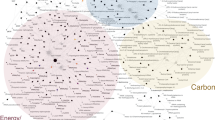Abstract.
We present a hypothesis suggesting that close linkage of functionally related anabolic genes and their ultimate integration into operons developed under selective pressure as a molecular strategy which contributed to the viability of ancestral thermophilic cells. Cotranslation of functionally related proteins is viewed as having facilitated the formation of multienzyme complexes channeling thermolabile substrates and the mutual stabilization of inherently thermolabile proteins. In this perspective, the evolutionary scheme considered the most probable is the evolution of both Bacteria and Archaea by thermoreduction (Forterre 1995) from a mesophilic, protoeukaryotic last common ancestor (LCA) endowed with appreciable genetic redundancy.
Similar content being viewed by others
Author information
Authors and Affiliations
Rights and permissions
About this article
Cite this article
Glansdorff, N. On the Origin of Operons and Their Possible Role in Evolution Toward Thermophily. J Mol Evol 49, 432–438 (1999). https://doi.org/10.1007/PL00006566
Issue Date:
DOI: https://doi.org/10.1007/PL00006566




